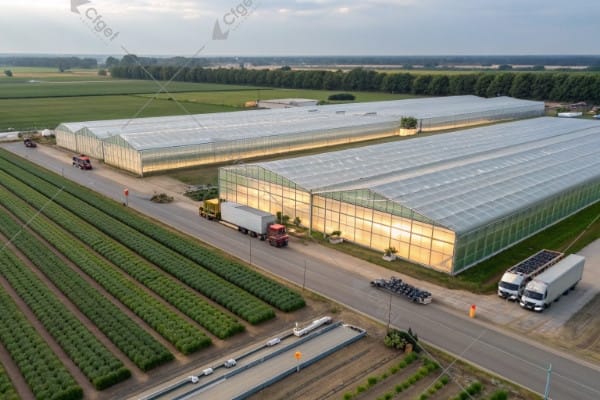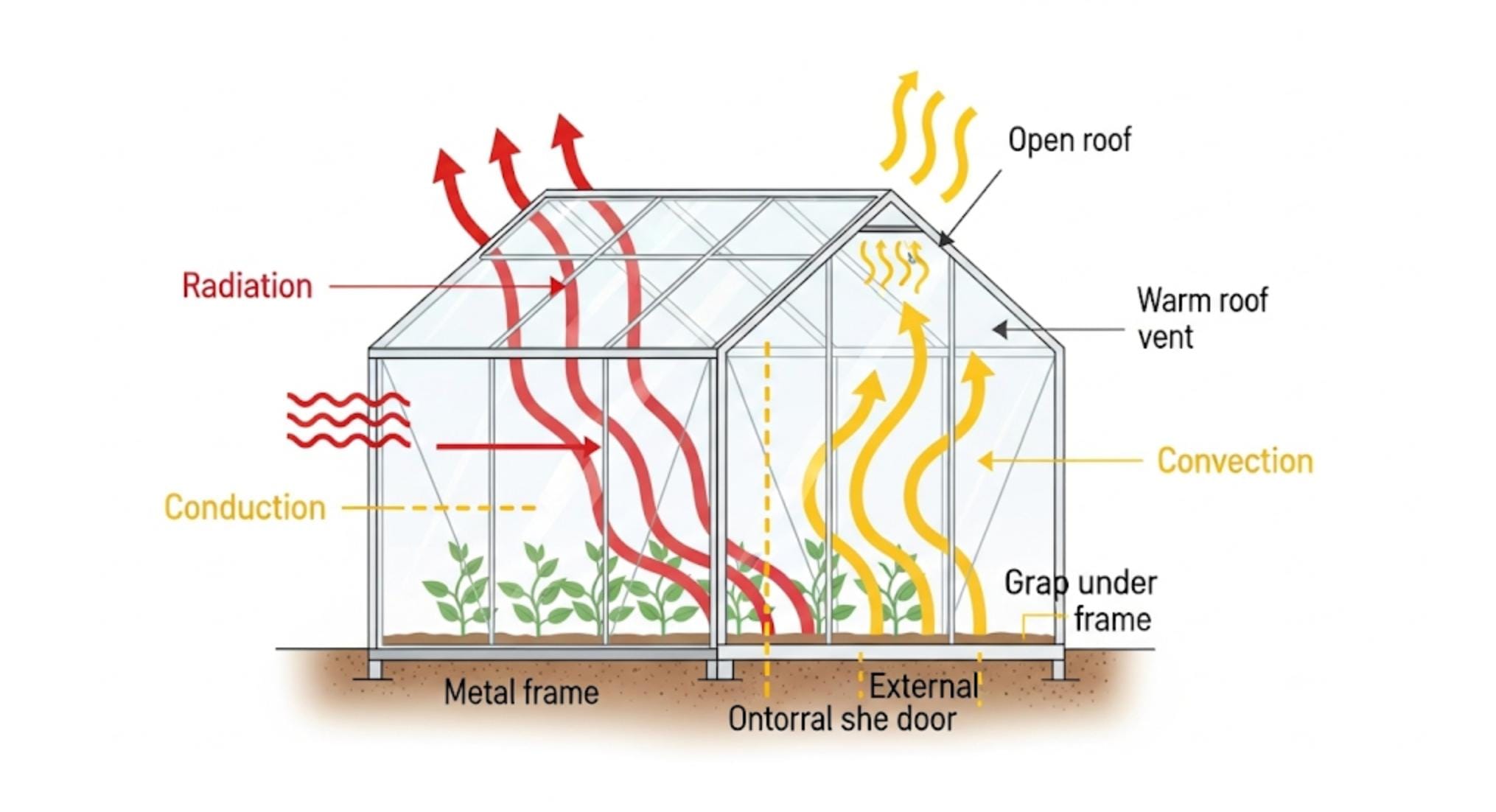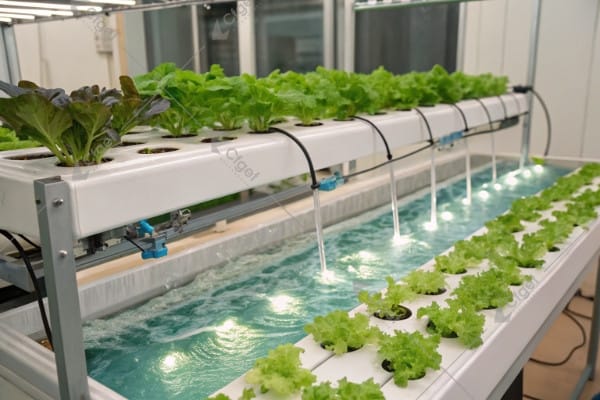High-value crops demand precision. Standard greenhouses fail specialty growers. Smart environmental control systems unlock profitable niche markets worldwide.
Specialty crop greenhouses generate 3-5x higher profits than traditional farming through precise environmental control systems. These facilities enable year-round production of medicinal plants, exotic spices, and premium mushrooms with consistent quality and maximum yield potential.
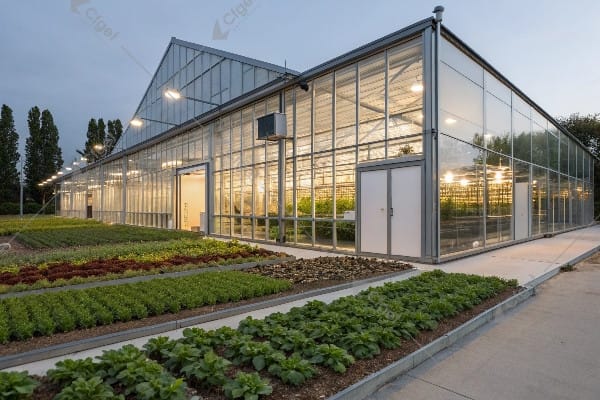
After 29 years in greenhouse technology, I’ve witnessed the transformation of specialty crop production. The difference between success and failure often comes down to one factor: environmental precision. Today’s specialty growers need more than basic structures. They need complete control systems.
The Secret Weapon: Total Environmental Control for High-Value Crops?
Specialty crops are sensitive. Temperature fluctuations kill profits. Humidity imbalances destroy harvests. Light variations reduce potency. Environmental control becomes your competitive advantage.
Total environmental control systems maintain temperature within ±1°C, humidity at optimal levels, and provide spectrum-specific lighting. These systems ensure consistent crop quality, reduce disease pressure, and maximize active compound concentrations in medicinal plants and specialty crops.
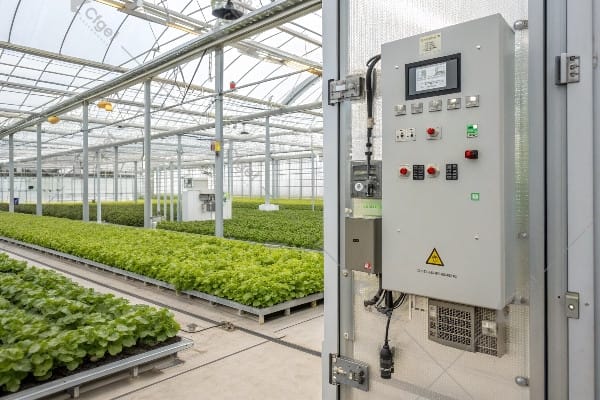
Understanding Critical Environmental Parameters
Temperature control forms the foundation of specialty crop success. Different crops require specific temperature ranges during various growth stages. Medicinal plants like cannabis need 18-24°C during vegetative growth and 20-26°C during flowering. Exotic spices such as saffron require cool nights at 10-15°C and warm days at 20-25°C. Mushroom cultivation demands even tighter control, with shiitake requiring 12-18°C for fruiting.
Humidity management prevents disease while optimizing plant metabolism. High-value crops are particularly susceptible to fungal infections when humidity exceeds optimal ranges. Our integrated dehumidification systems maintain relative humidity between 40-60% for most specialty crops. Advanced sensors monitor vapor pressure deficit, ensuring plants can transpire efficiently while preventing stress.
Light spectrum control maximizes active compound production. LED systems provide specific wavelengths that trigger desired plant responses. Blue light promotes compact growth and high essential oil content in herbs. Red light enhances flowering and fruit development. UV-B radiation increases cannabinoid production in medicinal plants. Our programmable LED arrays deliver precise light recipes for each crop type.
Air circulation systems prevent stagnant conditions that promote disease. Gentle airflow strengthens plant stems and ensures even temperature distribution. Carbon dioxide enrichment systems boost photosynthesis rates, increasing yields by 15-30%. Integrated filtration removes pathogens and contaminants from incoming air.
From Lab to Harvest: A Guide for Medicinal, Spice, & Mushroom Growers?
Research facilities demand laboratory-grade precision. Commercial growers need consistent results. The bridge between lab and production requires specialized greenhouse systems designed for controlled cultivation environments.
Medicinal plant cultivation requires sterile environments, precise nutrient delivery, and documented environmental conditions. Spice production needs temperature cycling and humidity control. Mushroom growing demands specialized substrates, controlled atmospheres, and contamination prevention throughout the entire production cycle.
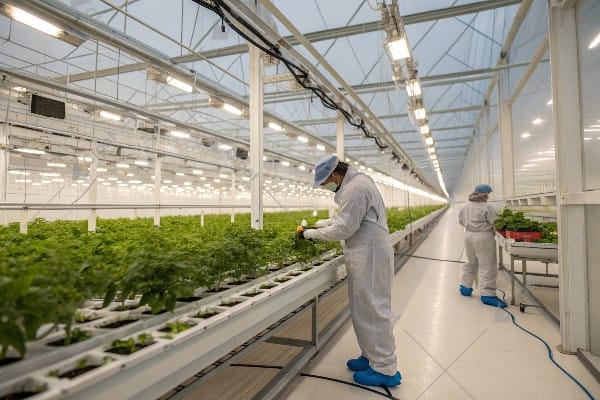
Medicinal Plant Production Systems
Medicinal plant cultivation starts with contamination control. Clean room protocols ensure product purity and regulatory compliance. HEPA filtration systems remove airborne contaminants. Positive pressure prevents outside air infiltration. UV sterilization systems eliminate pathogens on surfaces and in air streams.
Nutrient delivery systems provide precise fertilization. Automated fertigation delivers exact nutrient concentrations based on crop growth stages. EC and pH monitoring ensures optimal root zone conditions. Recirculating hydroponic systems minimize waste while maximizing nutrient uptake efficiency. Root zone cooling maintains optimal temperatures for nutrient absorption.
Documentation systems track environmental conditions throughout production cycles. Data loggers record temperature, humidity, light levels, and CO2 concentrations. This information supports quality control protocols and regulatory requirements. Automated alerts notify growers when conditions drift outside acceptable ranges.
Specialty Spice Cultivation
Spice production requires temperature cycling to trigger essential oil development. Saffron needs cool vernalization periods followed by warm growing conditions. Cardamom requires consistent moisture with good drainage. Vanilla orchids need high humidity with excellent air circulation.
Drying and curing systems preserve flavor compounds and extend shelf life. Controlled atmosphere storage maintains product quality during post-harvest handling. Temperature and humidity control during processing prevents mold growth while preserving volatile compounds.
Mushroom Growing Environments
Mushroom cultivation demands precise atmospheric control throughout production phases. Substrate preparation requires sterile conditions and specific moisture content. Inoculation rooms maintain positive pressure with HEPA-filtered air. Incubation chambers provide optimal temperature and humidity for mycelium development.
Fruiting rooms require different conditions than vegetative growth phases. Shiitake mushrooms need temperature drops to trigger fruiting. Oyster mushrooms require high humidity with fresh air exchange. Specialized misting systems maintain surface moisture without oversaturating substrates.
The Specialty Grower’s Tech Stack: 3 Essential Control Systems?
Technology integration separates profitable operations from struggling farms. Three core systems work together to create optimal growing environments. Each system serves specific functions while connecting to create comprehensive control.
Climate control systems, irrigation management, and monitoring networks form the essential technology foundation. These integrated systems provide real-time adjustments, predictive maintenance alerts, and data-driven optimization for maximum crop quality and yield consistency in specialty greenhouse operations.
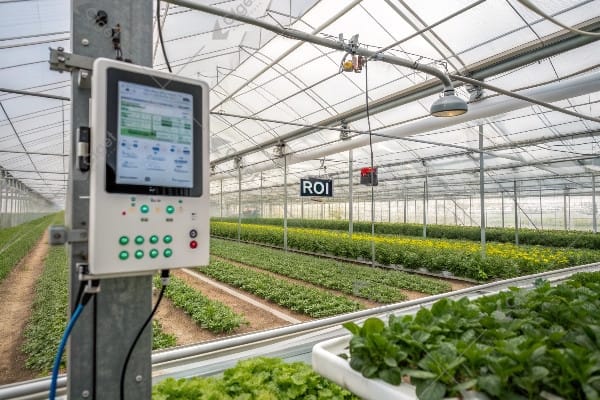
Climate Control: The Brain of Your Operation
Climate control systems integrate heating, cooling, ventilation, and humidity management into unified platforms. Advanced controllers use algorithms to predict environmental changes and make preemptive adjustments. Machine learning capabilities improve system performance over time by analyzing crop responses to different conditions.
Heating systems provide consistent temperatures during cold periods. Radiant floor heating delivers even heat distribution without creating hot spots. Boiler systems with heat exchangers maximize efficiency while minimizing fuel consumption. Backup heating ensures continuous operation during equipment failures.
Cooling systems maintain optimal temperatures during hot weather. Evaporative cooling provides energy-efficient temperature reduction in dry climates. Mechanical refrigeration offers precise control in humid environments. Thermal screens reflect excess heat while maintaining light transmission for photosynthesis.
Ventilation systems exchange air while maintaining environmental control. Variable speed fans adjust airflow based on temperature differentials. Heat recovery ventilators capture energy from exhaust air. Natural ventilation systems reduce energy consumption during moderate weather conditions.
Irrigation Management: Precision Water and Nutrient Delivery
Irrigation systems deliver water and nutrients with laboratory precision. Drip irrigation provides targeted delivery to root zones while minimizing water waste. Ebb and flow systems offer uniform distribution for container production. Aeroponic systems maximize oxygen availability to roots while conserving water.
Automated mixing systems prepare nutrient solutions to exact specifications. Concentrated stock solutions reduce storage requirements while ensuring consistency. pH adjustment systems maintain optimal nutrient availability. EC monitoring prevents salt buildup that can damage sensitive crops.
Drainage and recirculation systems capture and reuse excess irrigation water. Closed-loop systems minimize environmental impact while reducing operating costs. Water treatment systems remove accumulated salts and pathogens from recirculated solutions. Backup water supplies ensure continuous operation during supply interruptions.
Monitoring Networks: Data-Driven Decision Making
Sensor networks collect environmental data throughout greenhouse zones. Wireless systems eliminate cable installation while providing flexible sensor placement. Battery-powered sensors operate independently of electrical infrastructure. Solar-powered repeaters extend network coverage to remote greenhouse areas.
Data logging systems store historical information for analysis and compliance documentation. Cloud-based platforms provide remote access to real-time conditions. Mobile apps allow growers to monitor operations from anywhere. Automated reporting generates summaries for management review and regulatory submissions.
Alert systems notify growers immediately when conditions require attention. Customizable thresholds trigger warnings before problems develop. Escalation protocols ensure critical alerts reach responsible personnel. Integration with building management systems coordinates responses across all facility systems.
Beyond the High Investment: Analyzing the Profitability of Niche Crops?
Initial investment costs concern every specialty grower. Equipment expenses seem high compared to traditional farming. Smart analysis reveals the true profit potential of controlled environment specialty crop production.
Specialty greenhouses require $200-500 per square meter initial investment but generate $500-2000 per square meter annual revenue. High-value crops like medicinal plants, exotic spices, and gourmet mushrooms command premium prices that justify advanced environmental control system investments through rapid payback periods.
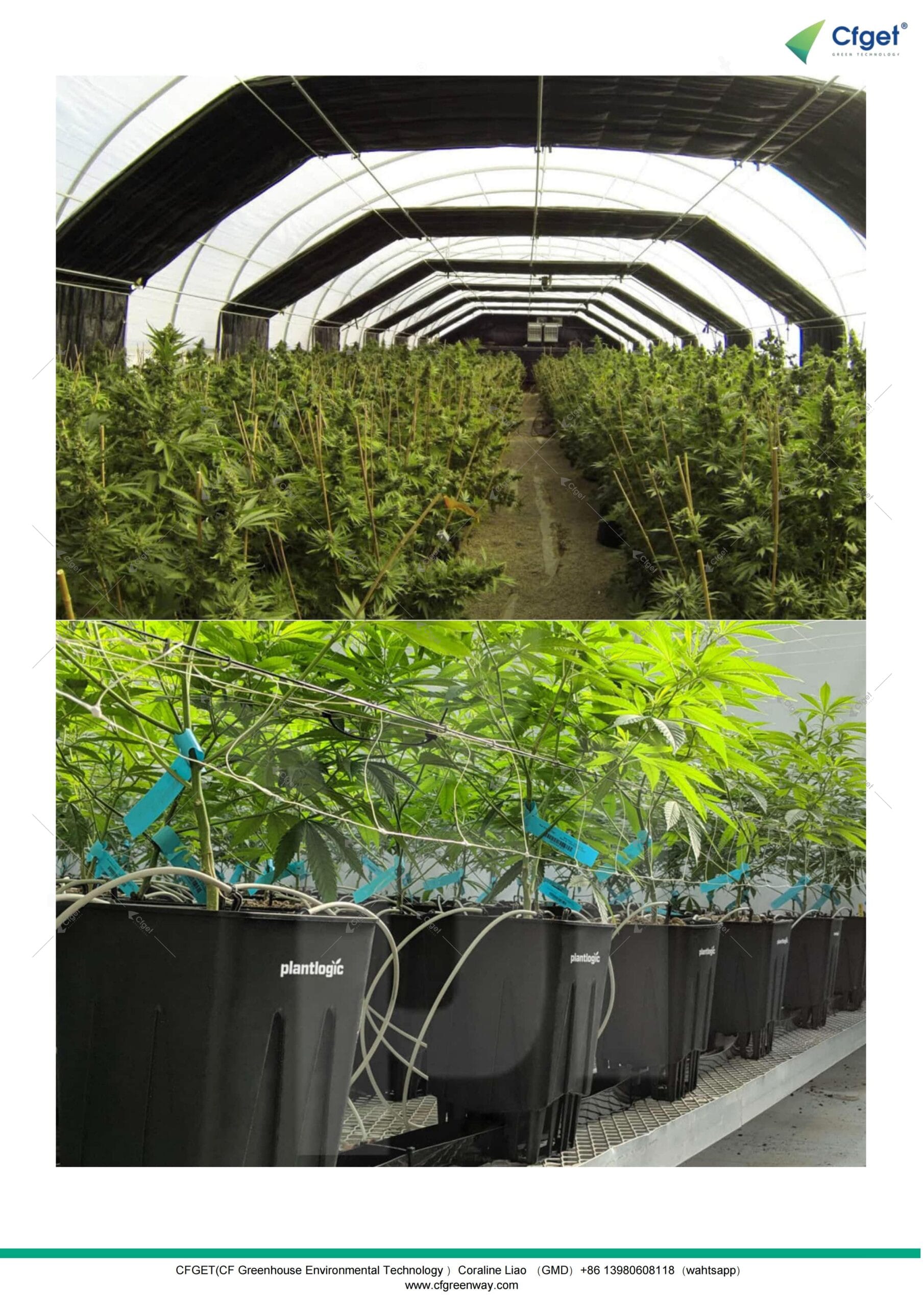
Investment Analysis and Return Calculations
Capital costs include structure, environmental systems, and specialized equipment. Basic greenhouse structures cost $50-100 per square meter. Environmental control systems add $100-200 per square meter. Specialized equipment for medicinal plants or mushroom production requires additional $50-200 per square meter investment.
Operating costs include energy, labor, materials, and maintenance. Energy consumption varies by climate and crop requirements. LED lighting systems reduce electricity costs compared to traditional fixtures. Automated systems minimize labor requirements while ensuring consistent crop care. Preventive maintenance programs reduce unexpected repair costs.
Revenue potential depends on crop selection and market positioning. Medicinal plants generate $1000-3000 per square meter annually. Exotic spices command $500-1500 per square meter. Gourmet mushrooms produce $800-2000 per square meter. Premium positioning and direct marketing increase profit margins significantly.
Market Analysis and Crop Selection
Market research identifies profitable opportunities in local and export markets. Medicinal plant demand grows 15-20% annually in developed countries. Exotic spice markets expand as culinary diversity increases. Gourmet mushroom consumption rises with health-conscious consumer trends.
Regulatory considerations affect crop selection and facility requirements. Medicinal plant production requires licensing and compliance documentation. Organic certification commands premium prices but requires specific production protocols. Food safety regulations apply to edible crops and processing facilities.
Competition analysis reveals market gaps and pricing opportunities. Local production offers advantages over imported products through freshness and reduced transportation costs. Year-round availability commands premium prices during off-seasons. Quality consistency builds customer loyalty and supports premium positioning.
Financial Planning and Risk Management
Cash flow planning accounts for seasonal variations and crop cycles. Medicinal plants require 3-6 months from planting to harvest. Mushroom production cycles complete in 6-12 weeks. Spice crops may require annual cycles with single harvest periods.
Insurance coverage protects against crop losses and equipment failures. Crop insurance covers losses from environmental failures or contamination. Equipment insurance protects against repair costs and business interruption. Liability insurance covers product-related claims and facility accidents.
Financing options support initial investment and expansion plans. Equipment financing spreads costs over useful equipment life. Government grants support sustainable agriculture and technology adoption. Investor partnerships provide capital in exchange for profit sharing or equity positions.
Conclusion
Specialty crop greenhouses transform niche farming into profitable enterprises through precise environmental control, integrated technology systems, and strategic market positioning for sustainable long-term success.


